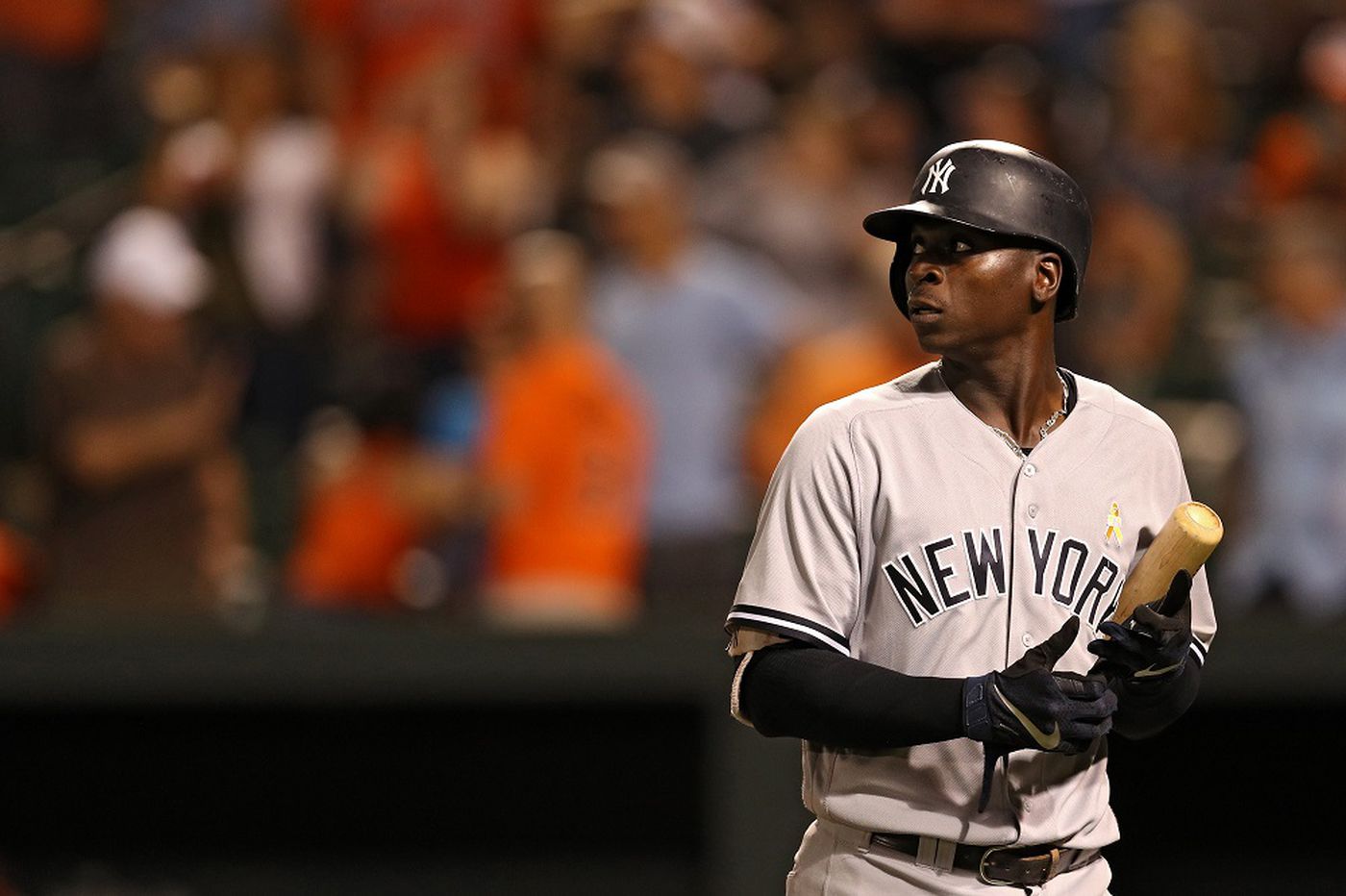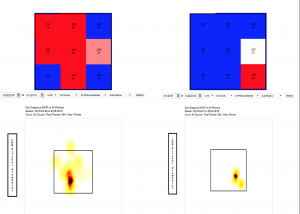The Yankees are 13-5 this May, but no thanks to the April AL Player of the Month, Didi Gregorius.
Didi’s awesome April has been followed by a meager May. This month, the 28-year-old shortstop has fallen terribly short of the MVP-caliber numbers he posted in April. Last month, Didi went 32-for-98 (.327/.427/.735) with 8 2Bs, 1 3B, 10 HRs, and 30 RBI. Since the beginning of May, however, he’s seen that .327 batting average dip to .247—now lower than teammates who have also endured slumps this year, such as Giancarlo Stanton and Aaron Hicks.
In May thus far (entering Wednesday night’s game in Texas), Didi is 8-for-64 (.125/.164/.172) with 3 2Bs, no homers, and 2 RBI. His lack of production prompted manager Aaron Boone place Didi on the bench for the final two games of the series in Kansas City last weekend. The benching was less of a punishment and more of an attempt to get him out of his own head. Yankee hitting coach Marcus Thames lent some advice for the struggling Gregorius.
“You know what I told him? Go get in a hot-air balloon and circle the stadium,” Thames said to Marc Carig of The Athletic. “Give yourself a breather, man. Sometimes, that’s the best thing that you can possibly do is get away.”
In essence, that idea makes sense. However, we all know breaking out of a slump is way, way more complex than hopping in a hot air balloon. Which leads us to the million dollar question: Why is Didi in this slump?
Its never easy to pinpoint exactly what is causing a hitter to slump, but I looked at the splits between April and May and I don’t think there’s any coincidence here. From Opening Day until May 1st, pitchers were willing to challenge Didi with pitches in on his hands and even over the middle of the plate (see left side of chart below). However, the small sample size of big numbers Didi put up clearly evinced a change in the approach pitchers have taken when facing him. From May 1st until today, it is abundantly clear that pitchers have tried to keep the ball away from him at all costs—and its working.
The heat maps indicate that more pitchers are honing in on that area down and away, as opposed to last month when they challenged Didi inside and down the middle. Sure, you can say that any successful pitcher has stayed away from the inner half—especially when facing lefties with power—but it’s particularly concerning because Didi hasn’t shown he can take that pitch the other way yet. Have a look at his isolated power (ISO/P) splits between that same time frame. *Isolated power is a measure of a hitter’s raw power, and tells you how often a player hits for doubles, triples, and home runs. It has become a a quick tool to evaluate the extent to which a given hitter produces extra base hits opposed to singles*
As you can see, Didi’s sweetspot is that low-middle area—an area where pitchers are now avoiding at all costs because they know the damage that can be done there. On the right side, his ISO/P is in that down and away region, which pitchers are now targeting, because that’s the only area where Didi is seeing pitches nowadays. Its forced Gregorius to go the opposite way if he wants to be productive—something he has yet to prove he can do consistently. In the span of the slump from May 1st until Wednesday night’s game on May 22nd, Didi has seen opposite field batted ball percentage rise from 20% to 29.7%. You might say that’s a good thing, but when you look at his soft contact percentage rising from 16.7% to 27% over that same span, you might change your mind.
Didi Gregorius is undoubtedly a better hitter than what he’s shown this May, and it’s probably only a matter of time before he shakes the yips. Baseball always been a game of adjustments, and as soon as the adjustment is made in Didi’s approach, positive results will follow.
“To me, it’s about him just getting into a real strong hitting position each and every time he does he does go to fire,” manager Aaron Boone told reporters. “I think it’ll be around the corner.”






